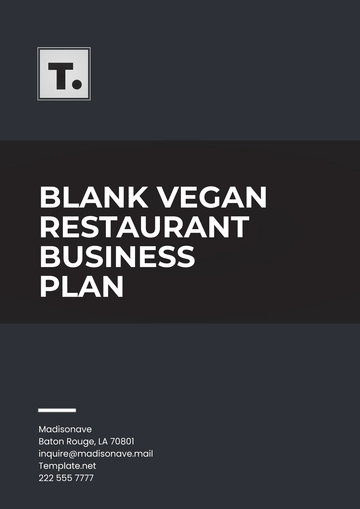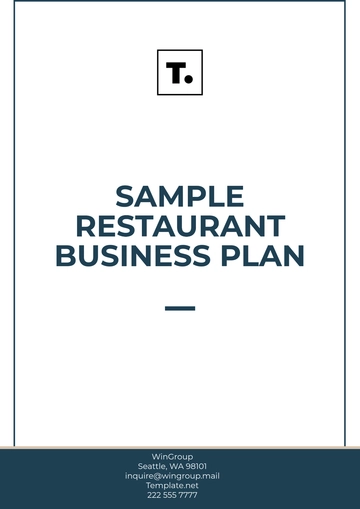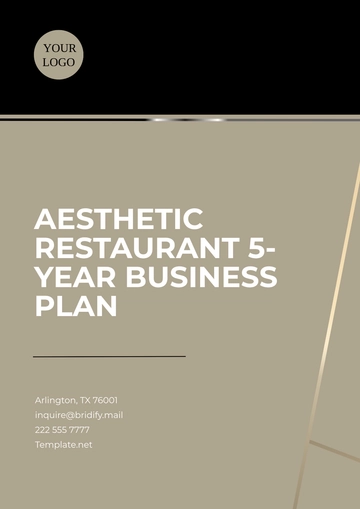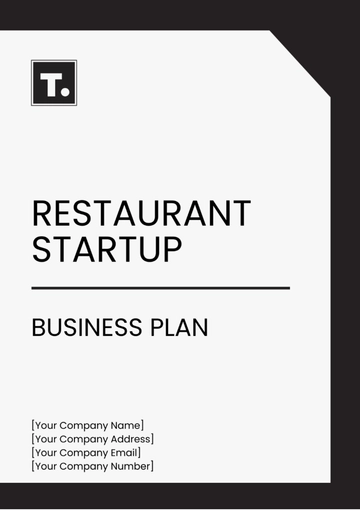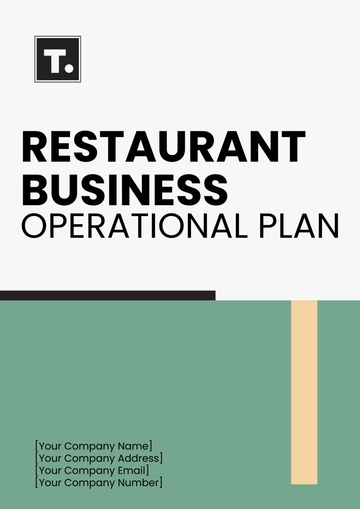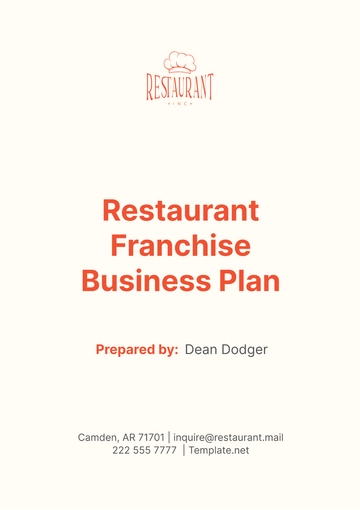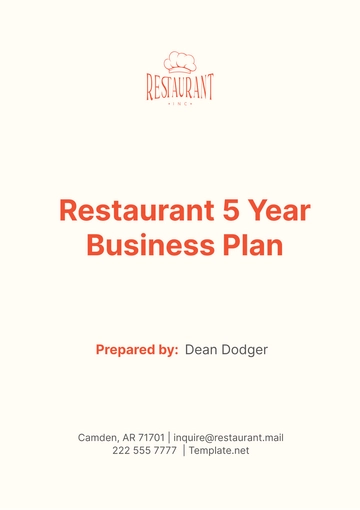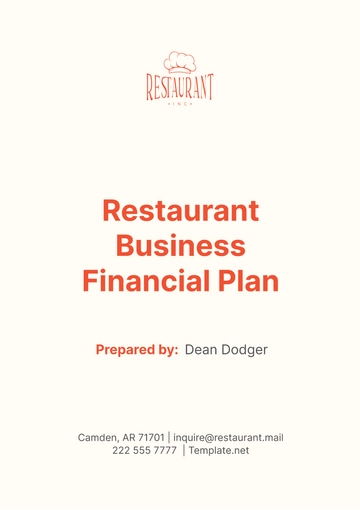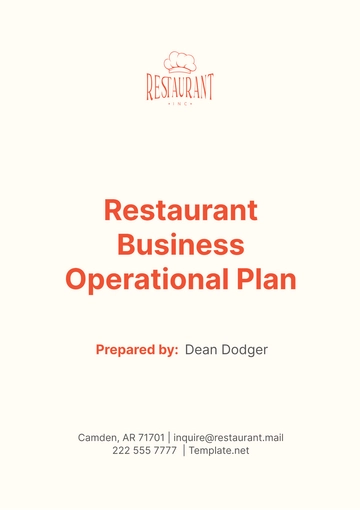Free Seafood Restaurant Business Plan
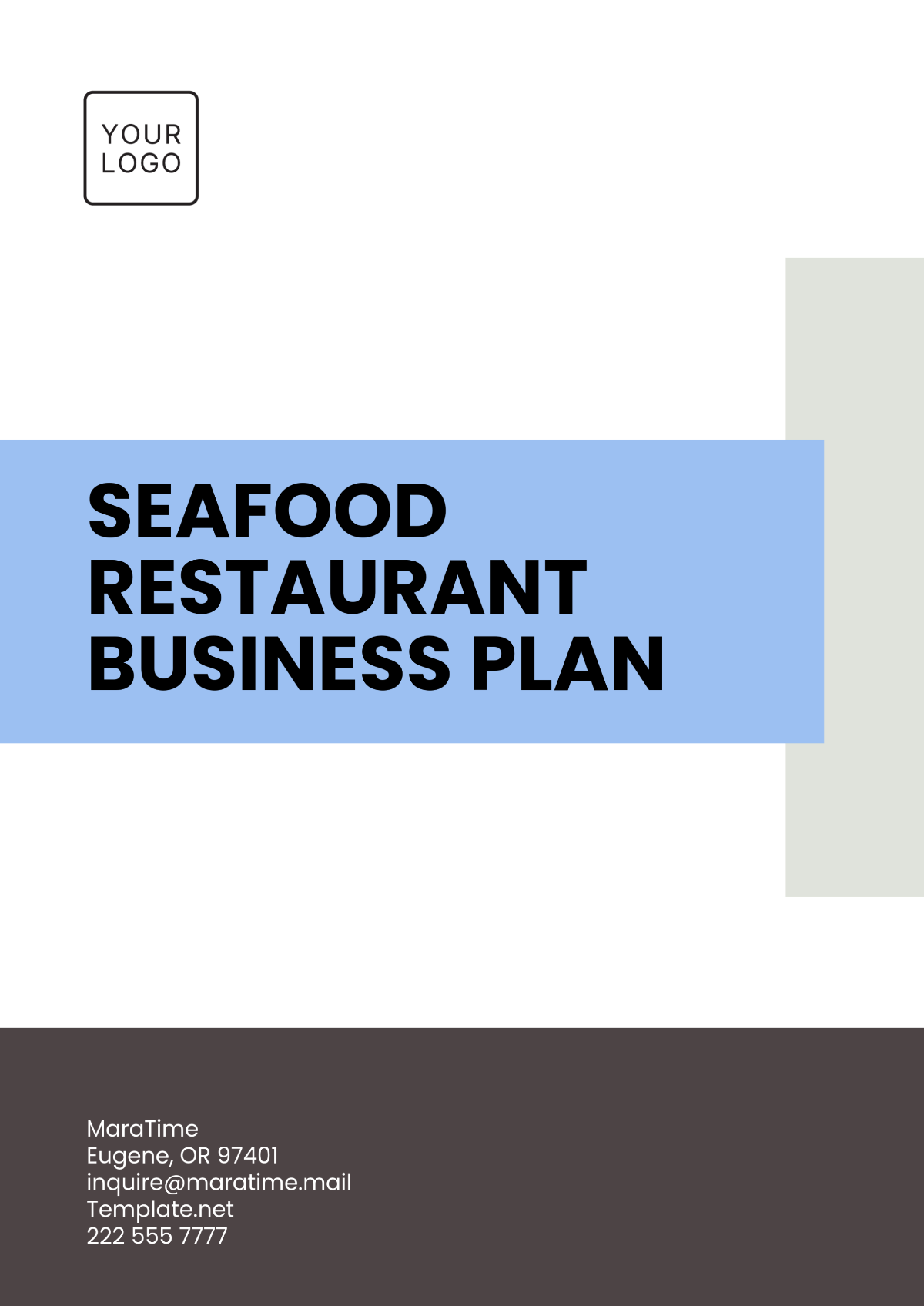
Prepared by: [Your Name]
Company: [Your Company Name]
Date: [Insert Date]
I. Executive Summary
[Your Company Name] is a premium seafood restaurant that aims to provide an exceptional dining experience by serving fresh, sustainably sourced seafood. Located in a prime urban area with high foot traffic, the restaurant will cater to seafood lovers seeking high-quality dishes, excellent service, and a warm, inviting atmosphere. The goal is to establish [Your Company Name] as the top seafood dining destination in the region, achieving profitability within the first year of operations.
II. Business Description
Business Name: [Your Company Name]
Business Type: Full-service seafood restaurant
Location: [Your Company Address]
Ownership Structure: Sole proprietorship/Partnership/LLC
[Your Company Name] will specialize in fresh, locally sourced seafood prepared with a mix of traditional and contemporary techniques. The restaurant will feature a dynamic menu, a signature cocktail bar, and an intimate, coastal-inspired ambiance.
Mission Statement:
To deliver a memorable culinary experience that celebrates the freshness and diversity of seafood, emphasizing sustainability, creativity, and customer satisfaction.
Vision Statement:
To become a recognized leader in the seafood dining industry, renowned for quality, innovation, and environmental stewardship.
III. Market Analysis
A. Industry Overview:
The seafood restaurant industry has seen significant growth due to increased consumer demand for healthier dining options. According to industry reports, seafood consumption has risen steadily, with customers seeking both traditional and innovative menu options.
B. Target Market:
Primary Audience: Middle-to-upper-income professionals and families aged 25-55
Secondary Audience: Tourists, food enthusiasts, and business dinners
C. Competitive Analysis:
[Your Company Name] will differentiate itself through:
An exclusive focus on fresh, sustainable seafood
Unique menu items blending classic and modern flavors
A superior dining experience with personalized service
D. Market Gap:
Many seafood restaurants in the area focus solely on traditional dishes, leaving a gap for an upscale dining experience with innovative offerings and a sustainability-driven ethos.
IV. Marketing and Sales Strategy
A. Brand Positioning
[Your Company Name] will be positioned as a high-quality, eco-friendly seafood destination offering unparalleled taste and service.
B. Promotional Channels
Social Media: Instagram, Facebook, and TikTok to showcase dishes, behind-the-scenes preparations, and promotions
Partnerships: Collaborations with local fish markets and eco-friendly organizations
Loyalty Programs: Incentives for repeat customers through a rewards app
Online Presence: A responsive website with online reservations, menu previews, and a blog about sustainable seafood
C. Sales Strategies
Seasonal promotions, such as "Lobster Fest" or "Oyster Happy Hours"
Exclusive tasting menus and wine pairings for special events
Catering services for private and corporate events
V. Operations Plan
A. Location and Layout
The restaurant will be located in a busy downtown area, with seating for 100 guests, including a private dining room and an outdoor patio. The design will feature coastal-inspired décor with soft lighting and natural materials.
B. Menu Highlights
Signature dishes: Grilled lobster tails, seared scallops, seafood risotto
Rotating seasonal specials
Vegetarian and gluten-free options
Signature cocktails and a curated wine list
C. Staffing
General Manager
Head Chef and Sous Chefs
Waitstaff and Bartenders
Marketing Manager
Support staff (dishwashers, cleaners)
D. Suppliers
[Your Company Name] will work closely with local fishermen and sustainable seafood providers to ensure the highest quality ingredients.
VI. Financial Plan
A. Startup Costs
Lease and Renovation: $200,000
Equipment and Furniture: $150,000
Initial Inventory: $50,000
Marketing and Branding: $30,000
Working Capital: $70,000
Total: $500,000
B. Revenue Projections
Year 1: $1,200,000
Year 2: $1,500,000
Year 3: $1,800,000
C. Cost of Goods Sold (COGS):
Estimated at 30% of total revenue
D. Profit Margins:
Year 1: 20%
Year 2: 25%
Year 3: 28%
E. Break-even Analysis:
The business is expected to break even within the first 10 months of operations.
VII. Sustainability and Corporate Social Responsibility
[Your Company Name] will prioritize sustainability by:
Sourcing seafood from certified sustainable fisheries
Using eco-friendly packaging and minimizing waste
Partnering with local environmental organizations
VIII. Conclusion
[Your Company Name] is poised to become a leader in the seafood dining industry, combining exceptional food, sustainability, and a superior customer experience. With a strategic location, innovative menu, and strong marketing approach, the restaurant will achieve its vision of being the go-to seafood destination while delivering substantial returns for its stakeholders.
- 100% Customizable, free editor
- Access 1 Million+ Templates, photo’s & graphics
- Download or share as a template
- Click and replace photos, graphics, text, backgrounds
- Resize, crop, AI write & more
- Access advanced editor
You may also like
- One Page Business Plan
- Coffee Shop Business Plan
- Restaurant Business Plan
- Food Business Plan
- Real Estate Business Plan
- Executive Summary Business Plan
- Cover Page Business Plan
- Nonprofit Business Plan
- Daycare Business Plan
- Construction Business Plan
- Startup Business Plan
- Medical Business Plan
- Bakery Business Plan
- Service Plan
- Hotel Business Plan
- Catering Business Plan
- School Business Plan
- Healthcare Business Plan
- Transportation Plan
- Sports Plan
- Car Wash Business Plan
- Salon Business Plan
- Clothing Business Plan
- Farming Business Plan
- Boutique Plan
